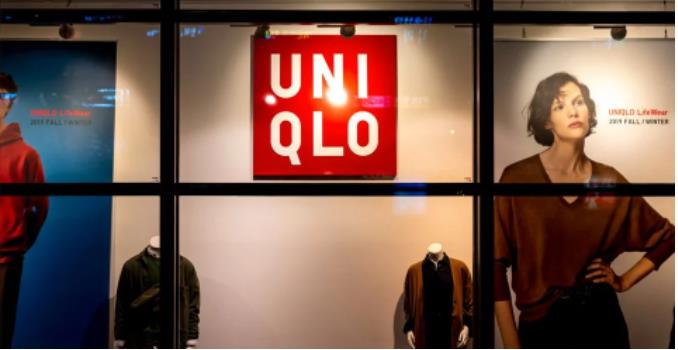The start-up story of the owner of Uniqlo: His career was at a standstill, he had to reluctantly help his father’s small tailor shop, establishing the world’s leading fashion brand.
Tadashi Yanai is one of the most successful entrepreneurs in Japan as the founder and chairman of Fast Retailing and is ranked as the 2nd wealthiest in Japan (according to Forbes data for 2021).
The company he founded, Fast Retailing is now the world’s third largest apparel manufacturer, with more than 3,000 retail stores, and a portfolio of brands including Uniqlo, Theory, Helmut Lang, J Brand and GU .
Little known facts about Tadashi Yanai
Born in 1949 in a family of tailors in Hiroshima – Japan, Yanai’s childhood was associated with the family’s small tailor shop, surrounded by fabrics, needles and tailoring.
Although he graduated with a BA in Economics and Politics from Waseda University, Tadashi Yanai’s first job was as a men’s clothing and kitchenware salesman at a local supermarket, Jusco. He left the company after only a year.
After quitting his job, Yanai fell into a deadlock when thinking about his career. Although “not volunteering” at first, the young man decided to work at his father’s tailor shop. However, this was the stepping stone to his career. The first years of business were really difficult for Yanai, especially in terms of business management and operation.
“I had to clean the store, wash my coats, do the sourcing – I really had to do everything myself because there was no one else,” he told Business of Fashion in 2016: “However, it is a Great learning opportunity.”
And Tadashi Yanai, despite being the owner of one of the world’s biggest fashion houses, usually wears only two outfits including a $15 navy Merino crew-neck sweater. His loyalty to casual fashion – if examined closely, is extremely consistent with the traditional principles of a man from the land of the rising sun, emphasizing “practical beauty”. and “simply the best”.
“I believe that the founder of a company never really retires” – Tadashi Yanai
Uniqlo imprint and different business strategy

After working at his father’s shop, Tadashi became interested in the business, and his passion for selling clothes. He established the first branch of Unique Clothing Warehouse (later changed to Uniqlo) in Hiroshima.
Inspired by European and American brands such as Benetton, Gap and Esprit that he saw in one of his travels, Yanai set out to create mass-produced casual apparel chain stores in Japan. In 1991, he changed the company’s name from Ogori Shoji to Fast Retailing, which is more globally recognizable, taking its prototype from the fast food chain.
During the 80s and 90s of the last century, Tadashi Yanai realized that Japan was a potential market for low-priced affordable fashion products. Young people in Japan have begun to prefer ready-to-use products over tailored, traditional clothing like previous generations.
Tadashi has aimed to incorporate a ‘mass-produced casual chain store’ system that has its roots in American and European culture into Japan. While Zara has built the world’s largest apparel business on being responsive to rapidly changing fashion trends, shipping from factory to store in as little as two weeks, Uniqlo has a way to go. The exact opposite approach, planning to produce essentials for the “wardrobe” a year in advance. By 1998, Uniqlo had more than 300 stores across Japan, and the “infamous” $15 fleece jacket sold two million units in just 12 months.
Going forward, not only positioning itself as a “fast, readily available, and low-cost” fashion brand, part of the appeal of Uniqlo-branded products – that is, fashion models with a chic basic design , timeless, high quality that can be worn year after year, matching perfectly with the rest of everyone’s wardrobe. From the elite to the middle class, Uniqlo has successfully captured the entire clothing market. In 2004, the company released its Global Quality Statement, pledging to stop producing low-priced, low-quality apparel. “I want to be appreciated for providing nice clothes,” Yanai said at the time. “Having a reputation for being cheap is sad.”
He hopes better, more durable fabrics will help. These efforts have resulted in additional product lines to Uniqlo’s tech-enabled fashion portfolio including Heattech (a shirt and pants designed to keep warm, launched in 2003), Ultra light down (a lightweight insulation used in the company’s jackets, launched in 2009) and AIRism (a bra designed to wick away sweat, released in 2013).
The company also uses artificial intelligence to create designs based on customer purchases, the way Netflix recommends movies based on what people have seen.
With his tireless journey of working to build a huge business empire, the Japanese billionaire businessman was honored by Forbes as one of the 100 Greatest Business Minds of 2017 and one of the 100 Greatest People in Business. He has become one of the most creative and successful entrepreneurs in the world with a total fortune estimated by Forbes at $22.5 billion, ranked by Forbes as the most influential person in the world. 62nd in the world.
According to the Fatherland/General (The Richest, Business of Fashion, TheCEOMagazine)
at Blogtuan.info – Source: infonet.vietnamnet.vn – Read the original article here



